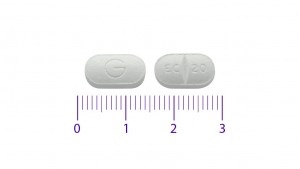

TAMOXIFENO VIATRIS 20 mg COMPRIMIDOS REVESTIDOS POR PELÍCULA

Pergunte a um médico sobre a prescrição de TAMOXIFENO VIATRIS 20 mg COMPRIMIDOS REVESTIDOS POR PELÍCULA

Como usar TAMOXIFENO VIATRIS 20 mg COMPRIMIDOS REVESTIDOS POR PELÍCULA
Introdução
Prospecto: informação para o utilizador
Tamoxifeno Viatris 20 mg comprimidos revestidos com película
Leia todo o prospecto atentamente antes de começar a tomar este medicamento, porque contém informações importantes para si.
- Conserva este prospecto, porque pode ter que voltar a lê-lo.
- Se tiver alguma dúvida, consulte o seu médico ou farmacêutico.
- Este medicamento foi prescrito apenas para si e não deve ser dado a outras pessoas, mesmo que tenham os mesmos sintomas que si, porque pode prejudicá-las.
- Se experimentar efeitos adversos, consulte o seu médico ou farmacêutico, mesmo que se trate de efeitos adversos que não aparecem neste prospecto. Ver seção 4.
Conteúdo do prospecto
- O que é Tamoxifeno Viatris e para que é utilizado
- O que precisa saber antes de começar a tomar Tamoxifeno Viatris
- Como tomar Tamoxifeno Viatris
- Possíveis efeitos adversos
- Conservação de Tamoxifeno Viatris
- Conteúdo do envase e informação adicional
1. O que é Tamoxifeno Viatris e para que é utilizado
Tamoxifeno Viatris contém o princípio ativo denominado tamoxifeno e pertence ao grupo de medicamentos denominados anti-estrogénios.
O estrogénio está no seu organismo e é uma substância natural conhecida como uma “hormona sexual”. Tamoxifeno actua bloqueando os efeitos do estrogénio.
Tamoxifeno Viatris está indicado em determinadas patologias da mama.
2. O que precisa saber antes de começar a tomar Tamoxifeno Viatris
Não tome Tamoxifeno Viatris:
- Se for alérgico a tamoxifeno ou a algum dos outros componentes deste medicamento (incluídos na seção 6).
- Se estiver grávida (ver “Gravidez, lactação e fertilidade”).
Advertências e precauções
Consulte o seu médico ou farmacêutico antes de começar a tomar Tamoxifeno Viatris.
- A administração conjunta com os seguintes medicamentos deve ser evitada, porque não pode ser excluída uma redução dos efeitos de tamoxifeno: paroxetina, fluoxetina (por exemplo, antidepressivos), bupropião (antidepressivo ou utilizado para deixar de fumar), quinidina (utilizada no tratamento da arritmia cardíaca) e cincalet/cinacalcet (para o tratamento de distúrbios da glândula paratiroidea).
- Se estiver utilizando um método anticonceptivo. Consulte o seu médico sobre os métodos anticonceptivos que deve empregar, porque alguns podem ser afetados por este fármaco.
- É importante que informe imediatamente o seu médico se apresentar alguma hemorragia vaginal anormal ou outros sintomas ginecológicos (tais como dor ou pressão pélvica) durante o tratamento com tamoxifeno ou em qualquer momento posterior. Isto deve-se a que podem ocorrer certas alterações no interior da matriz (endométrio), algumas das quais podem ser graves.
- Antes de iniciar o tratamento com este fármaco, é importante que informe o seu médico se si ou algum membro da sua família apresenta um histórico de coágulos sanguíneos ou alguma situação conhecida hereditária que origine um risco maior de formação desses coágulos.
- Em caso de ingressar num hospital, comunique ao pessoal sanitário que está tomando tamoxifeno.
- Em uma cirurgia diferida de reconstrução da mama (semanas ou anos depois da cirurgia principal mamária, quando o seu próprio tecido se desloca para dar forma a uma nova mama), tamoxifeno pode aumentar o risco de formação de coágulos de sangue nos vasos pequenos do injerto tissular, o que pode dar lugar a complicações.
- Este medicamento contém tamoxifeno que pode produzir um resultado positivo nos testes de controlo de dopagem.
- Foram notificadas reações graves na pele, incluindo o síndrome de Stevens-Johnson e necrólise epidérmica tóxica, em associação com o tratamento com tamoxifeno. Se notar algum dos sintomas relacionados com estas reações graves na pele descritas na seção 4, deixe de usar tamoxifeno e procure atenção médica imediatamente.
- Se tiver antecedentes de angioedema hereditário, porque tamoxifeno pode provocar ou agravar os sintomas de angioedema hereditário. Se experimentar sintomas como inchaço da face, lábios, língua e/ou garganta com dificuldade para engolir ou respirar, contacte um médico imediatamente.
Crianças e adolescentes
Tamoxifeno não deve ser administrado a crianças/adolescentes, porque não foi estabelecida a sua segurança nem eficácia neste grupo de idade.
Toma de Tamoxifeno Viatris com outros medicamentos
Informa o seu médico ou farmacêutico se está tomando, tomou recentemente ou pode ter que tomar qualquer outro medicamento.
Nunca deve tomar outro medicamento por iniciativa própria sem recomendação do seu médico, porque algumas combinações devem ser evitadas.
Em particular, deve informar o seu médico se está tomando algum dos seguintes medicamentos:
- Varfarina (um anticoagulante oral para prevenir coágulos de sangue).
- Rifampicina (para a tuberculose).
- Inibidores da aromatase tais como anastrozol, letrozol ou exemestano (empregados para tratar o cancro da mama).
- Paroxetina, fluoxetina (antidepressivos).
- Bupropião (antidepressivo ou utilizado para deixar de fumar).
- Quinidina (utilizada no tratamento da arritmia cardíaca).
- Cinacalcet (para o tratamento dos distúrbios da glândula paratiroidea).
Gravidez, lactação e fertilidade
Se estiver grávida ou em período de lactação, acredita que possa estar grávida ou tem intenção de engravidar, consulte o seu médico ou farmacêutico antes de utilizar este medicamento.
Os homens ou as mulheres devem utilizar um método anticonceptivo eficaz durante o tratamento com tamoxifeno, e as mulheres devem continuar durante pelo menos 7 meses e os homens pelo menos durante 4 após o fim do tratamento.
Durante o tratamento de tamoxifeno ou durante os dois meses posteriores ao cessar do mesmo, não deve estar grávida.
Não tome tamoxifeno se estiver em período de lactação, a menos que o seu médico tenha analisado os riscos e benefícios implicados. Não se conhece se tamoxifeno passa para o leite humano.
Condução e uso de máquinas
A influência de tamoxifeno sobre a capacidade para conduzir e utilizar máquinas é pequena.
No entanto, foi comunicado cansaço com o uso de tamoxifeno, por isso deve ter precaução ao conduzir ou utilizar máquinas enquanto estes sintomas persistam.
Tamoxifeno Viatris contém lactose, amarelo alaranjado S (E-110) e sódio
Este medicamento contém lactose. Se o seu médico lhe indicou que padece uma intolerância a certos açúcares, consulte com ele antes de tomar este medicamento.
Este medicamento pode produzir reações alérgicas porque contém amarelo alaranjado S (E-110). Pode provocar asma, especialmente em pacientes alérgicos ao ácido acetilsalicílico.
Este medicamento contém menos de 23 mg de sódio (1mmol) por comprimido; isto é, é essencialmente “isento de sódio”.
3. Como tomar Tamoxifeno Viatris
Siga exactamente as instruções de administração deste medicamento indicadas pelo seu médico ou farmacêutico. Em caso de dúvida, consulte de novo o seu médico ou farmacêutico.
Toma de Tamoxifeno Viatris
- A dose recomendada é de 1 comprimido (20 mg) a 2 comprimidos (40 mg) diários.
- Normalmente tamoxifeno é tomado uma ou duas vezes ao dia.
- Engula os comprimidos inteiros com ajuda de água.
- Tente tomar o comprimido à mesma hora todos os dias.
Não deixe de tomar os seus comprimidos mesmo que se sinta bem, a menos que o seu médico assim o indique.
Uso em crianças e adolescentes
Tamoxifeno não deve ser administrado a crianças/adolescentes, porque não foi estabelecida a sua segurança nem eficácia neste grupo de idade.
Se tomar mais Tamoxifeno Viatris do que deve
Em caso de sobredose ou ingestão acidental, consulte imediatamente o seu médico ou farmacêutico ou ligue para o Serviço de Informação Toxicológica, telefone 91 562 04 20, indicando o medicamento e a quantidade ingerida, ou acuda ao serviço de urgências do hospital mais próximo.
Se esquecer de tomar Tamoxifeno Viatris
Se esquecer de uma dose, tome-a assim que se lembrar. Não tome uma dose dupla para compensar as doses esquecidas.
Se interromper o tratamento com Tamoxifeno Viatris
O seu médico indicar-lhe-á a duração do seu tratamento com tamoxifeno. Não suspenda o tratamento antes de que o seu médico o diga.
Se tiver alguma outra dúvida sobre o uso deste medicamento, pergunte ao seu médico ou farmacêutico.
4. Possíveis efeitos adversos
Como todos os medicamentos, este medicamento pode produzir efeitos adversos, embora nem todas as pessoas os sofram.
Deixe de tomar tamoxifeno e informe o seu médico imediatamente se notar algum dos seguintes sintomas ou efeitos adversos, porque pode que necessite de tratamento médico urgente:
- Manchas vermelhas sem relevo, em forma de alvo ou circulares no tronco, muitas vezes com bolhas centrais, descamação da pele, úlceras na boca, garganta, nariz, genitais e olhos. Estes sarpilhos graves na pele podem ser precedidos de febre e sintomas semelhantes aos da gripe (síndrome de Stevens-Johnson, necrólise epidérmica tóxica); estes efeitos adversos ocorrem raramente.
- Inchaço da face, lábios, língua ou garganta, dificuldade para engolir ou respirar (angioedema). Tamoxifeno pode causar ou agravar os sintomas de angioedema hereditário.
Muito frequentes (podem afectar a mais de 1 de cada 10 doentes):
- Alterações do metabolismo e da nutrição: Retenção de líquidos.
- Alterações vasculares: Sofocos.
- Alterações gastrointestinais: Náuseas.
- Alterações da pele e do tecido subcutâneo: Erupção.
- Alterações do aparelho reprodutor e da mama: Hemorragia vaginal, fluxo vaginal.
- Alterações gerais e no local de administração: Cansaço.
Frequentes (podem afectar até 1 de cada 10 doentes):
- Neoplasias benignas, malignas e não especificadas (incl. quistes e pólipos): Fibromas uterinos.
- Alterações da sangue e do sistema linfático: Diminuição dos glóbulos vermelhos da sangue (anemia).
- Alterações do sistema imunológico: Reações de hipersensibilidade (reações alérgicas).
- Alterações do sistema nervoso: Aparição repentina de fraqueza ou paralisia dos braços ou pernas, dificuldade repentina para falar, caminhar, segurar coisas ou pensar (qualquer delas pode ocorrer devido a que o fluxo sanguíneo do cérebro está diminuído e estes sintomas podem ser sinal de um derrame cerebral), dor de cabeça, tontura, alterações sensoriais (incluyendo distúrbios do gosto e entorpecimento ou formigamento da pele).
- Alterações oculares: Cataratas, alterações da retina.
- Alterações gastrointestinais: Vómitos, diarreia, constipação.
- Alterações hepato-biliares: Alterações dos enzimas do fígado, acumulação de gorduras no fígado.
- Alterações da pele e do tecido subcutâneo: Perda de cabelo.
- Alterações musculoesqueléticas e do tecido conjuntivo: Cãibras nas pernas, dor muscular.
- Alterações do aparelho reprodutor e da mama: Comichão à volta da vagina, alterações endometriais (interior da matriz).
- Explorações complementares: Aumento dos níveis de gorduras no sangue.
- Alterações que afectam vários órgãos ou sistemas: Maior risco de coágulos sanguíneos (incluyendo coágulos nos vasos pequenos).
Pouco frequentes (podem afectar até 1 de cada 100 doentes):
- Neoplasias benignas, malignas e não especificadas (incl. quistes e pólipos): Tumor no endométrio (interior da matriz).
- Alterações da sangue e do sistema linfático: Diminuição do número de plaquetas (trombocitopenia), diminuição do número de leucócitos (leucopenia).
- Alterações do metabolismo e da nutrição: Elevação de cálcio no sangue (em doentes com metástases ósseas).
- Alterações oculares: Alterações da visão.
- Alterações respiratórias, torácicas e mediastínicas: Inflamação da zona pulmonar, que pode apresentar os mesmos sintomas que a pneumonia, como dificuldade para respirar e tosse.
- Alterações gastrointestinais: Inflamação do pâncreas (dor ou sensibilidade na zona alta do abdômen).
- Alterações hepato-biliares: Cirrose hepática (os sintomas podem incluir malestar geral, com ou sem coloração amarelada da pele e olhos), que em ocasiões tem resultado em falecimento.
Raros (podem afectar até 1 de cada 1.000 doentes):
- Neoplasias benignas, malignas e não especificadas (incl. quistes e pólipos): Tumor no útero (matriz), sintomas relacionados com a sua doença.
- Alterações da sangue e do sistema linfático: Diminuição do número de neutrófilos (neutropenia), descida isolada dos níveis de um tipo específico de leucócitos (agranulocitose).
- Alterações do sistema nervoso: Inflamação do nervo óptico e em um número reduzido de casos, perda de visão (causada pela inflamação do nervo óptico).
- Alterações oculares: Alterações da córnea, alterações do nervo óptico e em um número reduzido de casos, perda de visão (causada pela alteração do nervo óptico).
- Alterações hepato-biliares: Hepatite, detenção do fluxo de bile, falha hepática, dano das células hepáticas (os sintomas podem incluir malestar geral, com ou sem coloração amarelada da pele e olhos), que em ocasiões tem resultado em falecimento.
- Alterações da pele e do tecido subcutâneo: Angioedema (inchaço da face, lábios, língua e/ou garganta), inflamação dos vasos sanguíneos pequenos da pele que desencadeia uma erupção cutânea, reações graves na pele, com lesões, úlceras ou vesículas.
- Alterações do aparelho reprodutor e da mama: Distúrbios no tecido interior da matriz, quistes ováricos, pólipos vaginais (massa não tumoral no interior da vagina).
Muito raros (podem afectar até 1 de cada 10.000 doentes):
- Alterações da pele e do tecido subcutâneo: Lúpus eritematoso cutâneo (inflamação da pele que se caracteriza por uma erupção ou vermelhidão, sobretudo em áreas expostas à luz).
- Alterações congénitas, familiares e genéticas: Alteração da pele caracterizada pela presença de bolhas devido à produção elevada de um grupo especial de pigmentos (chamados porfirinas) pelo fígado.
Se apresentar sintomas de aparecimento de um coágulo sanguíneo tais como inchaço na panturrilha ou na perna, dor no peito, sensação de falta de respiração ou fraqueza repentina. INTERROMPA A ADMINISTRAÇÃO de tamoxifeno e contacte imediatamente o seu médico.
Comunicação de efeitos adversos
Se experimentar qualquer tipo de efeito adverso, consulte o seu médico ou farmacêutico, mesmo que se trate de possíveis efeitos adversos que não aparecem neste prospecto. Também pode comunicá-los directamente através do Sistema Espanhol de Farmacovigilância de Medicamentos de Uso Humano: https://www.notificaram.es. Mediante a comunicação de efeitos adversos, pode contribuir para proporcionar mais informações sobre a segurança deste medicamento.
5. Conservação de Tamoxifeno Viatris
Mantenha este medicamento fora da vista e do alcance das crianças.
Não utilize este medicamento após a data de caducidade que aparece no envase após CAD ou EXP. A data de caducidade é o último dia do mês que se indica.
Conservar no envase original para protegê-lo da luz.
Os medicamentos não devem ser deitados fora pelos esgotos nem para o lixo. Deposite os envases e os medicamentos que não precisa no Ponto SIGRE da farmácia. Em caso de dúvida, pergunte ao seu farmacêutico como se livrar dos envases e dos medicamentos que não precisa. Deste modo, ajudará a proteger o meio ambiente.
6. Conteúdo do envase e informação adicional
Composição de Tamoxifeno Viatris
- O princípio ativo é tamoxifeno (como citrato). Cada comprimido contém 30,34 mg de tamoxifeno citrato equivalente a 20,0 mg de tamoxifeno.
- Os outros componentes são: amido de milho, lactose, povidona (E-1201), amarelo alaranjado S (E-110), croscarmelosa de sódio (E-468), estearato de magnésio (E-470b), sílica coloidal, talco (E-553b) e hipromelosa (E-464).
Aspecto do produto e conteúdo do envase
Os comprimidos revestidos com película são alaranjados, redondos, biconvexos, gravados com “20” na face superior e inferior lisa.
Tamoxifeno Viatris é apresentado em envases de 30 e 60 comprimidos revestidos com película acondicionados em blisters.
Pode ser que apenas alguns tamanhos de envases estejam comercializados.
Titular da autorização de comercialização
Viatris Pharmaceuticals, S.L.U.
C/ General Aranaz, 86
28027 - Madrid
Espanha
Responsável pela fabricação
Prasfarma, S.L.
C/ Sant Joan, 11-15
08560 - Manlleu, Barcelona
Espanha
Data da última revisão deste prospecto:agosto 2024
A informação detalhada deste medicamento está disponível na página web da Agência Espanhola de Medicamentos e Produtos Sanitários (AEMPS) https://www.aemps.gob.es/

Quanto custa o TAMOXIFENO VIATRIS 20 mg COMPRIMIDOS REVESTIDOS POR PELÍCULA em Espanha em 2025?
O preço médio do TAMOXIFENO VIATRIS 20 mg COMPRIMIDOS REVESTIDOS POR PELÍCULA em dezembro de 2025 é de cerca de 5.06 EUR. Os valores podem variar consoante a região, a farmácia e a necessidade de receita. Confirme sempre com uma farmácia local ou fonte online para obter informações atualizadas.
- País de registo
- Preço médio em farmácia5.06 EUR
- Substância ativa
- Requer receita médicaSim
- Fabricante
- Esta informação é apenas para referência e não constitui aconselhamento médico. Consulte sempre um médico antes de tomar qualquer medicamento. A Oladoctor não se responsabiliza por decisões médicas baseadas neste conteúdo.
- Alternativas a TAMOXIFENO VIATRIS 20 mg COMPRIMIDOS REVESTIDOS POR PELÍCULAForma farmacêutica: COMPRIMIDO, 10 mgSubstância ativa: tamoxifenFabricante: Laboratorios Cinfa S.A.Requer receita médicaForma farmacêutica: COMPRIMIDO, 20 mgSubstância ativa: tamoxifenFabricante: Laboratorios Cinfa S.A.Requer receita médicaForma farmacêutica: COMPRIMIDO, 20 mgSubstância ativa: tamoxifenFabricante: Teva Pharma S.L.U.Requer receita médica
Alternativas a TAMOXIFENO VIATRIS 20 mg COMPRIMIDOS REVESTIDOS POR PELÍCULA noutros países
As melhores alternativas com o mesmo princípio ativo e efeito terapêutico.
Alternativa a TAMOXIFENO VIATRIS 20 mg COMPRIMIDOS REVESTIDOS POR PELÍCULA em Polónia
Alternativa a TAMOXIFENO VIATRIS 20 mg COMPRIMIDOS REVESTIDOS POR PELÍCULA em Ukraine
Médicos online para TAMOXIFENO VIATRIS 20 mg COMPRIMIDOS REVESTIDOS POR PELÍCULA
Avaliação de posologia, efeitos secundários, interações, contraindicações e renovação da receita de TAMOXIFENO VIATRIS 20 mg COMPRIMIDOS REVESTIDOS POR PELÍCULA – sujeita a avaliação médica e regras locais.












